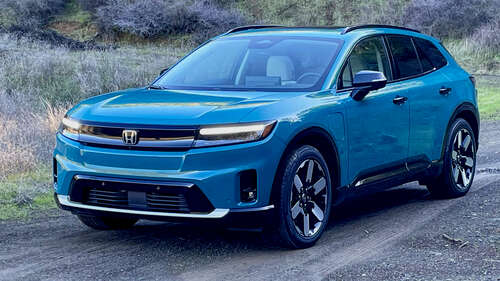
The Prologue starts at $47,400 for the single-motor EX and $51,700 for the single-motor Touring; dual-motor versions cost $3,000 more. The loaded Elite, dual-motor only, starts at $57,900. These prices do not include the $1,395 destination charge.
To help ease the transition to EV life, the Prologue’s MSRP includes the choice of a Level 2 home charging station with $500 installation credit and $100 EVgo network public charging credit, a Level 1/2 portable charger with $250 installation credit and $300 public charging credit, or $750 public charging credit. For charging convenience, Honda’s mobile app integrates the EVgo, Electrify America, and Tesla Supercharger networks.
The Prologue does come standard with a load of safety technology, and it’s Honda’s first model to get rear cross-traffic braking, blind-zone steering assist, and rear pedestrian alert (the latter standard on the Elite trim). The great news here is that so much comes standard that there are only a couple of extra-cost features. Crash testing hasn’t yet been completed.
In terms of attributes like standard range and connectivity features, the Honda Prologue beats competitors like the Tesla Model Y, Ford Mustang Mach-E, Hyundai Ioniq 6, and Kia EV6. We’d normally advise test-driving the Chevy Blazer EV as well, but that might be tough at the moment given its troubles. Honda anticipates the Prologue will qualify for the $7,500 federal tax credit, but it seems like EV prices change as often as gas prices these days, so shop carefully. The Prologue hits showrooms in spring of 2024.
If the Honda Prologue is truly forward-facing, it’s mostly because, even by Honda’s admission, there’s plenty of room to grow beyond this step.

